In a year of unprecedented stress, loss and continuous uncertainty from the COVID-19 pandemic, mobile phones provided a lifeline for women to stay afloat. Across low- and middle-income countries, 3 billion people now access the internet on a mobile phone[1], and for most people, it is the only way in which they access the internet. Women are even more likely than men to rely exclusively on a mobile to access the internet. So when the world went online to keep going through lockdowns, mobiles became a critical tool for women to stay connected, keep informed and earn a living. Mobiles provided a channel to access education, government services and to pay for essential goods and services. When in-person gatherings were banned, mobiles were a way to attend a wedding virtually, to learn a new skill via YouTube and to market goods by sharing photos on social media.
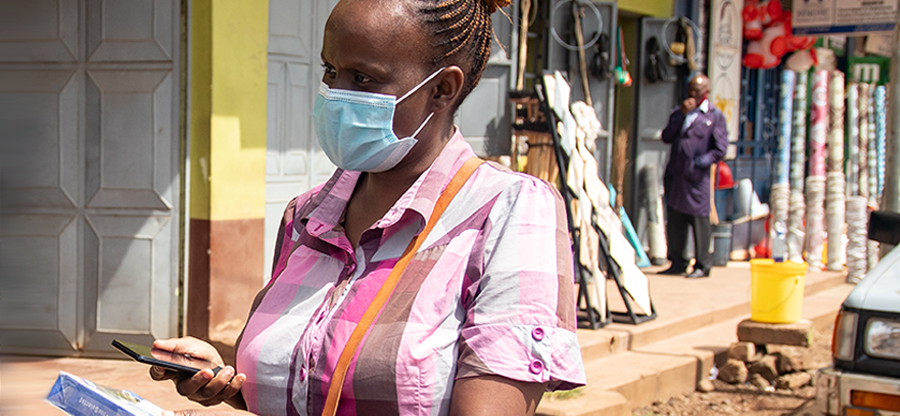
As our GSMA Mobile Gender Gap Report 2021 highlights, so far the pandemic does not appear to have negatively impacted the overall gender gap in mobile ownership, which has remained relatively flat, nor the gender gap in mobile internet, which has improved this year – driven mostly by South Asia. Across low- and middle-income countries, 58 per cent of women now access mobile internet (Figure 1), with an estimated 112 million women going online for the first time in 2020. But access and use of mobile remains unequal; women are 7 per cent less likely than men to own a mobile and 15 per cent less likely to use mobile internet.
Figure 1
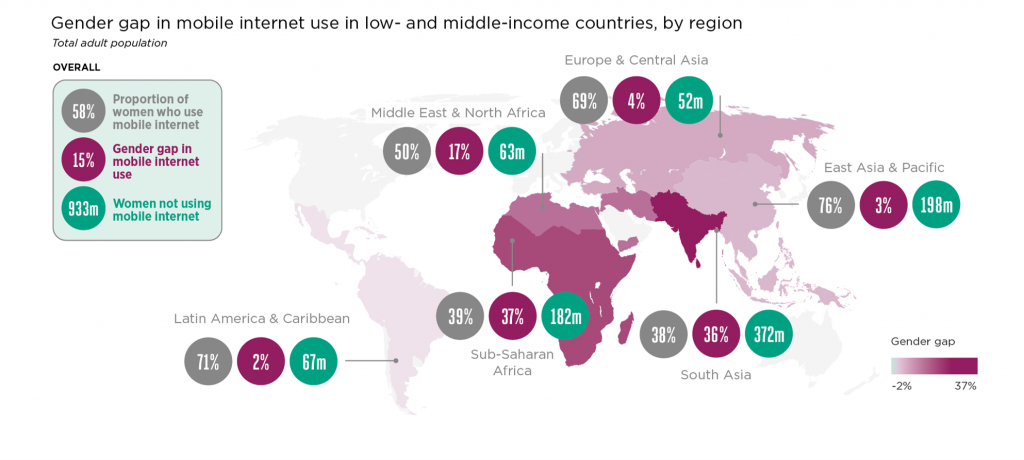
Across low- and middle-income countries, an estimated 933 million women are still not using mobile internet and, as shown in Figure 1, there are significant variations across regions. The gender gap in mobile internet remains especially high in Sub Saharan Africa and South Asia, at 37 per cent and 36 per cent respectively.
This is the fourth Mobile Gender Gap Report in the series, and as such we are able to report on trends in the gender gap since 2017 (Figure 2). It is interesting to note the remarkable progress in South Asia to reduce the gender gap in both mobile ownership and mobile internet usage. The gender gap in mobile internet usage is particularly striking. South Asia previously had the highest gender gap, but is now on par with Sub Saharan Africa, which has seen little progress since 2017 (Figure 2). This highlights the important work that still needs to be done to ensure all women are digitally included and that existing inequalities are not exacerbated– especially in light of the pandemic.
Figure 2
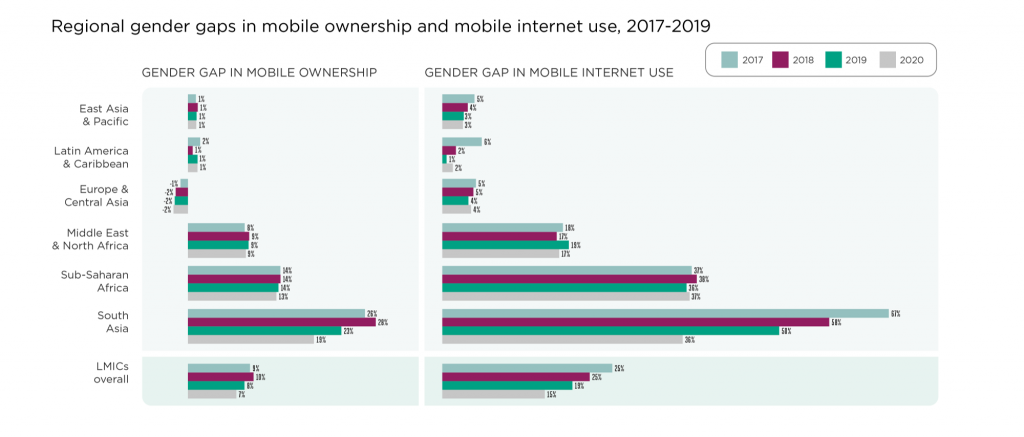
The mobile gender gap is driven by a complex set of social, economic and cultural factors, which result in women experiencing barriers to mobile ownership and use more acutely than men. If we are to address the gender gap, it is important for us to get a better understanding of women’s needs and the barriers that prevent them from owning and using mobile technology. In this year’s report, the main reasons cited by women mobile users for not using mobile internet was a lack of literacy and digital skills (a special section on mobile-related skills is included in this year’s report). Affordability was the second most cited barrier, primarily of internet-enabled handsets. This is also a key barrier to mobile ownership.
If women are to have equal access and use of mobile internet, an internet-enabled handset is crucial. Smartphones in particular are a driver of greater mobile internet usage, and when a woman owns a smartphone she is almost as likely as a man to use mobile internet and access a similar range of services. This year, the smartphone gender gap has reduced significantly; women are now 15% less likely to own a smartphone than men, compared to 20% last year. This growth is driven by India, where women’s uptake of smartphones and internet usage has been significant (Figure 3).
Figure 3
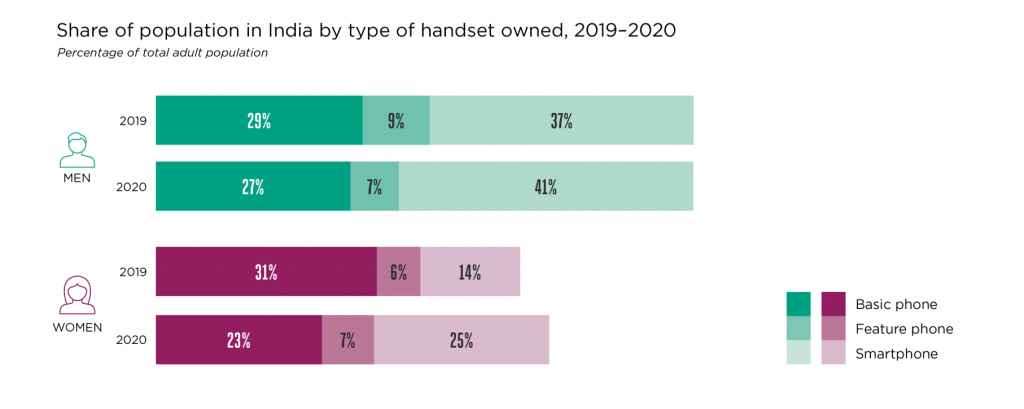
“[COVID-19] has been a multiplier of digital inclusion for women. What would have taken five years has taken place in one.”
Digital Empowerment Foundation
In our qualitative research in India we saw that women’s uptake of smartphone and mobile internet were influenced by the additional justifications that COVID-19 restrictions provided. Children’s education, video calling with family and friends, and access to income-generating opportunities provided compelling and legitimate use cases, enabling some women to start using mobile internet. However, it remains to be seen whether or not these norms will persist as India’s COVID-19 crisis continues.
“Now there is a good excuse, as children’s online classes are going on, so women have the excuse to buy a smartphone.”
Female, 18-24, rural, Bihar
While COVID-19 restrictions and lockdowns have increased the need for connectivity, there are also early signs from some survey countries that the pandemic may be having a negative impact on women’s handset ownership. Our qualitative research in Kenya revealed that the economic impact of COVID-19 has been severe, making handsets less affordable and the use of mobile internet less justifiable, particularly for women. Kenya is the only survey country where the gender gap in mobile internet use has widened, from 34 per cent in 2019 to 42 per cent in 2020. As mobile internet use among men in Kenya increased, women’s use remained flat.
“A phone is not a priority for me now, other things are; children going to school, buying food, clothing.”
Female, 35–44, rural, Rift Valley
COVID-19 has shown us the importance of digital inclusion for all. Ongoing measurement of the mobile gender gap is critical to understand and address the long-term impact of the pandemic on women’s access to and use of mobile. In a world increasingly reliant on the internet, better quality gender disaggregated data is essential for ensuring that women are not left behind.
Read our latest GSMA Mobile Gender Gap Report 2021 for more detailed findings and recommendations.
[1] GSMA Intelligence, Q1 2021
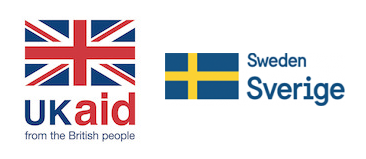
This initiative is funded by UK aid from the UK government and by aid from the Swedish International Development Cooperation Agency (SIDA), and is supported by the GSMA and its members. The views expressed do not necessarily reflect the UK or Swedish governments’ official policies.


